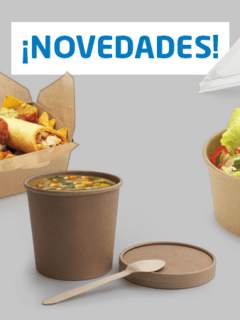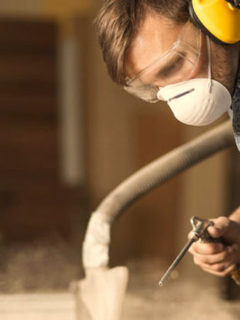Polypropylene and polyethylene are two essential polymers for the manufacture of various plastic products. They may appear to be similar compounds at first glance, but in reality, the differences between polypropylene and polyethylene are striking. Polyethylene is the most widespread, while the scope of polypropylene is more specific como en el catálogo de Rajapack contamos con casi 200 productos confeccionados a partir del polietileno o del polipropileno, hemos analizado las principales diferencias entre ambos para entender la aplicación de cada tipo de plástico.
como en el catálogo de Rajapack contamos con casi 200 productos confeccionados a partir del polietileno o del polipropileno, hemos analizado las principales diferencias entre ambos para entender la aplicación de cada tipo de plástico.
1. Características del polietileno
El polietileno es la base del plástico más utilizado en el mundo y, además, es el más sencillo a nivel de composición química. Estas son las principales características del polietileno:
– El polietileno resiste mejor las bajas temperaturas en comparación con el polipropileno.
– Es un material muy elástico y se estira fácilmente, cuenta con mayor flexibilidad.
– El polietileno da lugar a un tipo de plástico robusto, con gran resistencia a la abrasión, al impacto y al desgaste. Por ejemplo, su estructura apenas varía entre -80°C y 80°C.
– Su precio es muy competitivo y , debido a ello, el polietileno es el principal componente de gran parte de los productos que se usan en el mundo del embalaje.
Productos de embalaje
fabricad
- Plastic bags: the vast majority of pLASTIC BAGSare made from polyethylene, which comes in a wide variety of formats, so typical shopping bags (tinted or untinted), delivery bags (ideal for e-commerce) or even rubbish bags are also made from polyethylene.
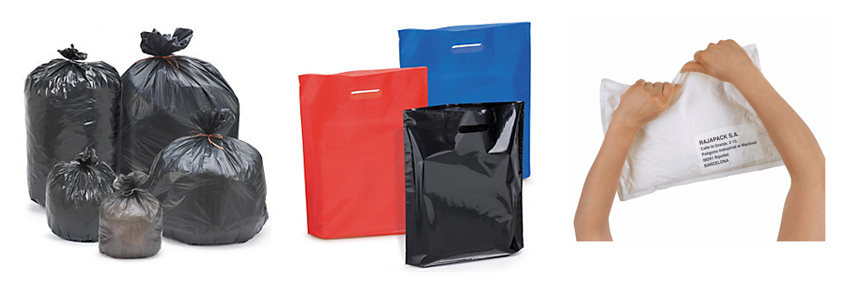
- Stretch film: thanks to the elasticity and flexibility of polyethylene, it is the component used to produce the various stretch films that are used for pallet packaging. There are both transparent and opaque stretch films with a touch of colour (if we do not want the products to be visible in order to prevent theft or simply to differentiate shipments).
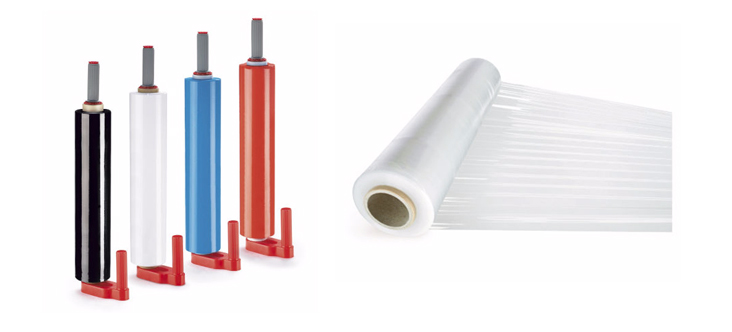
- Protective packaging: Polyethylene-based plastic is very versatile and can be used for many different types of protective packaging, such as bubble wrap, but also protective foam sheets or protective pads, which are spongy materials that help to cushion shocks that may occur during the transport of goods.
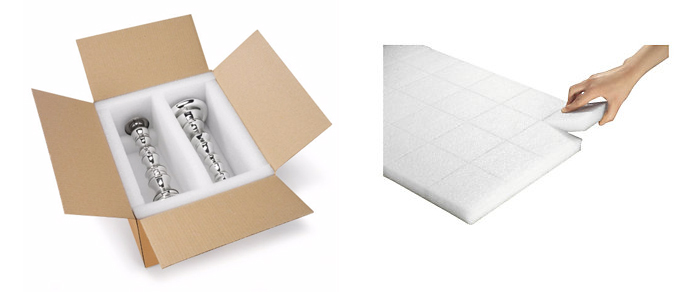
- Plastic mesh boxes and safety helmets: these very different products are made of polyethylene, which also serves to make a hard and strong plastic. For example, plastic mesh boxes are very useful for the agricultural and food sector, as they can be stacked without any problem and facilitate the storage and transport of products. On the other hand, safety helmets need to be made of a high-strength material to be an effective PPE for workers.
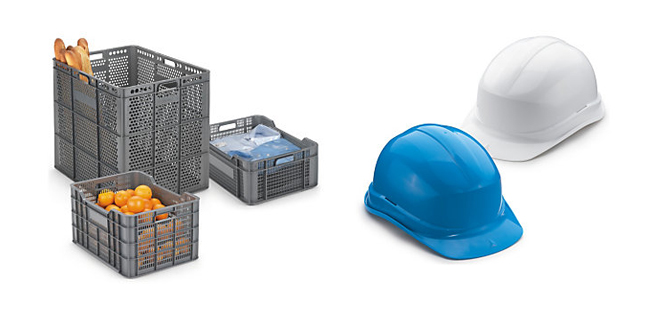
2.
Propiedades del polipropileno
El polipropileno es un material menos generalizado que el polietileno. Aun así, lo encontramos en productos de embalaje muy utilizados por sus singulares características:
– Es de color blanco translúcido de forma natural, por lo que se le puede aplicar color fácilmente.
– Se trata de un material mucho más ligero que el polietileno.
– El polipropileno resiste mejor frente a los electrolitos (aísla de la electricidad) y los ácidos abrasivos. Es la mejor ventaja con la que cuenta frente al polietileno.
– Es difícil de quebrar o romper, aunque es un material menos elástico o flexible que el polietileno.
– Soporta mejor las altas temperaturas si lo comparamos con el polietileno y, en este caso, permanece en perfectas condiciones entre 0°C y 100°C.
– Es más brillante y más transparente que el polietileno.
Productos de embalaje confeccionados con polipropileno
El polipropileno está presente en menos productos que el polietileno, pero algunos artículos producidos con
- Polypropylene adhesive tapes: most adhesive tap es are made from this material due to its firmness and malleability. The traditional brown seals are an example of this, but we can also find them in different varieties of colours and with printed messages (for example, to warn of the fragility of the goods). There are also adhesive tapes made from silent polypropylene to limit excess noise.
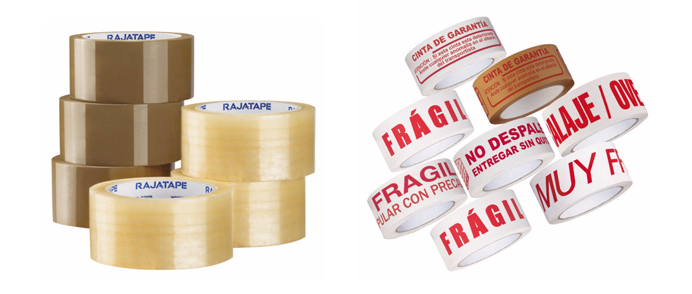
- Strapping for sealing boxes and pallets: the strength of polypropylene makes it the material of choice for strapping. These extremely strong plastic tapes are used for sealing boxes and pallets. They are often used in packaging to reinforce the initial closure made with adhesive tapes.
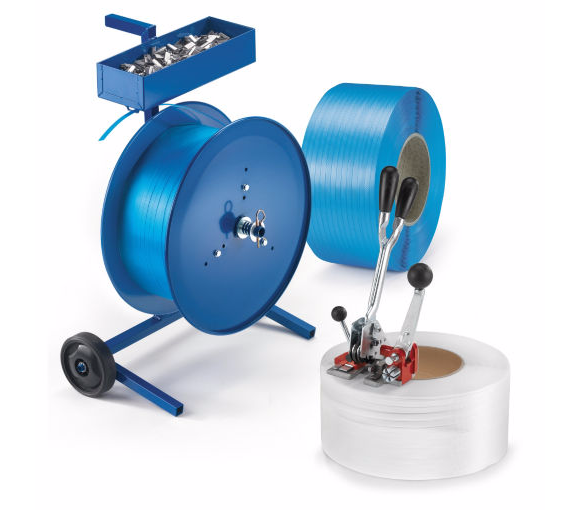
- Plastic boxes and drawers for storage: as we mentioned before, polypropylene is a material that is very strong against abrasion. This makes boxes and drawers made of it perfect for storing any type of substance. In addition, this extra consistency means that they are stackable, a very useful feature in the field of logistics and warehouse management.
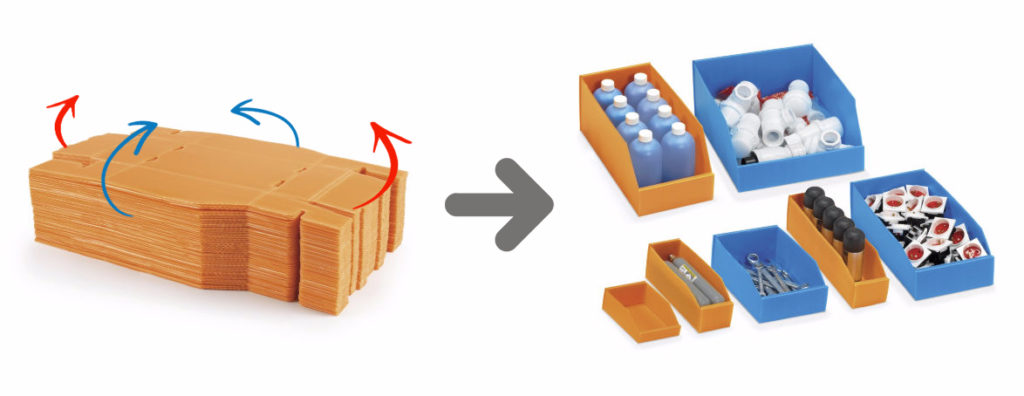
- Polypropylene plastic bags: there are also, of course, models of transparent plastic bags made of polypropylene. They are completely transparent and very shiny and, thanks to this, they are often used to highlight the products they contain (for example, they are widely used with clothing).
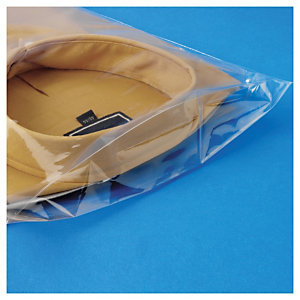
3.
Características comunes del polietileno y del polipropileno
Para finalizar, hay que destacar que el polietileno y el polipropileno también cuentan con características compartidas al ser polímeros implicados en la fabricación de plástico. Veamos cuáles son:
– Se pueden colorear de forma muy sencilla, por lo que es común encontrar productos con muy distintos grados de opacidad. Tenemos desde los plásticos más transparentes hasta los más opacos, normalmente de colores.
– En general, resisten bien al contacto con agentes químicos, aunque, como hemos dicho, el polipropileno presenta mejor comportamiento en este sentido.
– Son materiales que aguantan el estiramiento de manera efectiva, por ello son muy utilizados en el mundo del embalaje.
– Dan lugar a productos muy consistentes frente a golpes e impactos, por eso los encontramos en el sector del embalaje como elementos de protección.
– Se trata de materiales muy versátiles y maleables. Por ello están presentes en muy distintos sectores y format











